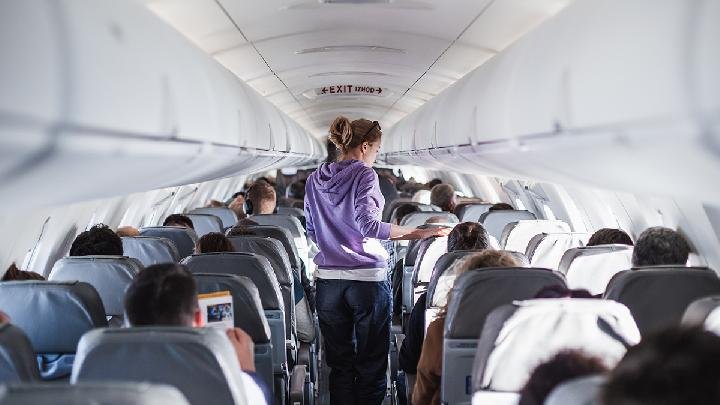Unlocking Affordable Adventures: The Allure of Low Ticket Prices
At Flightticketbooking.co.in, we understand that travel dreams shouldn’t be limited by budget constraints. The allure of exploring new cultures, experiencing breathtaking landscapes, and creating lasting memories is universal. However, the perception that travel is inherently expensive often prevents individuals and families from realizing these aspirations. That’s where the magic of low ticket prices comes in. The pursuit of affordable flights has become an art form, a strategic game where savvy travelers leverage knowledge, flexibility, and the right resources to unlock incredible adventures without breaking the bank. This article delves into the world of low ticket prices, exploring the factors that influence them, the strategies for finding them, and the considerations to keep in mind when booking.
The Dance of Supply and Demand: Understanding Price Fluctuations
The price of an airline ticket is not a static entity; it’s a dynamic value that fluctuates based on a complex interplay of factors, primarily driven by the fundamental economic principles of supply and demand. Airlines operate on the principle of maximizing revenue per flight, and their pricing models are sophisticated algorithms designed to achieve this goal.
- Demand: The most significant driver of ticket prices is demand. Popular routes, flights during peak seasons (holidays, summer breaks), and travel to event-heavy destinations will naturally command higher prices. Conversely, flights during off-peak seasons, mid-week departures, and travel to less-touristed locations will often be significantly cheaper. Understanding these demand patterns is crucial for finding low ticket prices.
- Seasonality: As mentioned, seasonality plays a massive role. The "shoulder seasons" (the periods immediately before and after peak season) often offer a sweet spot, with pleasant weather and lower prices. Think late spring or early fall for many destinations.
- Day of the Week: Traditionally, Tuesdays and Wednesdays have been considered the cheapest days to fly, as business travel tends to peak on Mondays and Fridays. While this isn’t always a hard-and-fast rule, it’s still a factor worth considering. Flying on less popular days often translates to lower demand and, therefore, lower prices.
- Time of Day: Early morning "red-eye" flights or late-night departures are often less desirable for travelers, leading to lower prices. These flights might require some sacrifice in terms of sleep or convenience, but they can offer substantial savings.
- Fuel Costs: Airlines are highly sensitive to fluctuations in fuel prices. When fuel costs rise, airlines often pass those costs on to consumers in the form of higher ticket prices.
- Competition: Routes with multiple airlines competing for passengers tend to have lower prices than routes dominated by a single carrier. Increased competition forces airlines to offer more competitive fares to attract customers.
- Booking Window: The timing of your booking can also significantly impact the price. Booking too early (months in advance) might not guarantee the lowest price, as airlines are still gauging demand. Booking too late (close to the departure date) almost always results in higher prices, as airlines capitalize on last-minute demand. The "sweet spot" is generally considered to be a few weeks to a few months in advance for domestic flights, and a few months to several months in advance for international flights.
Strategies for Unearthing Low Ticket Prices: A Traveler’s Toolkit
Now that we understand the factors influencing ticket prices, let’s explore some effective strategies for finding those coveted low fares:
- Be Flexible with Dates and Destinations: Flexibility is your greatest asset in the pursuit of low ticket prices. If you’re open to traveling on different dates or to alternative destinations, you’ll significantly increase your chances of finding a deal. Use flight search engines that allow you to search for fares across a range of dates or to explore multiple destinations.
- Utilize Flight Search Engines and Aggregators: Numerous flight search engines and aggregators scour the internet for the best deals. Popular options include Google Flights, Kayak, Skyscanner, Momondo, and Hopper. These tools allow you to compare prices from multiple airlines and travel agencies, track price changes, and set up alerts for when prices drop.
- Set Up Price Alerts: Most flight search engines offer the option to set up price alerts. You can specify your desired route and dates, and the engine will notify you when the price changes. This allows you to monitor prices and book when you see a good deal.
- Consider Budget Airlines: Budget airlines (also known as low-cost carriers) often offer significantly lower fares than traditional airlines. However, be aware that budget airlines typically charge extra for amenities such as checked baggage, seat selection, and meals. Factor these extra costs into your overall budget to determine if a budget airline is truly the most cost-effective option.
- Look for Package Deals: Sometimes, booking a flight and hotel together as a package can be cheaper than booking them separately. Many travel agencies and online travel providers offer package deals that can save you money.
- Fly into Alternative Airports: Larger, more popular airports often have higher landing fees and taxes, which can translate to higher ticket prices. Consider flying into smaller, regional airports near your destination. These airports may have fewer amenities, but they can offer significant savings.
- Be Mindful of Hidden Fees: Airlines often charge extra fees for things like checked baggage, seat selection, and meals. Be sure to factor these fees into your overall budget when comparing prices. Read the fine print carefully to avoid any surprises.
- Use Incognito Mode: While debated, some believe airlines track your searches and increase prices accordingly. Using incognito mode or clearing your browser cookies before searching can potentially prevent this.
- Consider Connecting Flights: Direct flights are convenient, but they often come at a premium. Connecting flights can be significantly cheaper, especially on long-haul routes. Be mindful of layover times to avoid tight connections or excessively long waits.
Important Considerations: Balancing Cost and Convenience
While finding low ticket prices is a worthwhile pursuit, it’s essential to consider the trade-offs involved. Sometimes, the cheapest flight isn’t necessarily the best option. Here are some factors to keep in mind:
- Layover Times: Connecting flights can be cheaper, but long layover times can be tiring and inconvenient. Consider the length of the layover and whether it’s worth the savings.
- Airport Location: Flying into a smaller, regional airport might save you money on the ticket price, but it could also require additional transportation costs to get to your final destination. Factor in the cost of transportation when comparing prices.
- Baggage Fees: Budget airlines often charge extra for checked baggage. If you plan to check a bag, be sure to factor in the baggage fees when comparing prices.
- Seat Selection: Some airlines charge extra for seat selection. If you have a preference for a particular seat, be sure to factor in the seat selection fee.
- Cancellation and Change Policies: Low ticket prices often come with stricter cancellation and change policies. Be sure to read the terms and conditions carefully before booking. Understand if you can change your flight, and what fees might be associated with doing so.
- Overall Travel Time: Sometimes the cheapest flight involves very long layovers or indirect routes, significantly increasing your total travel time. Consider whether the savings are worth the extra time spent in transit.
- Airline Reputation: While price is a key factor, consider the airline’s reputation for on-time performance, customer service, and safety. Reading reviews and comparing airlines can help you make an informed decision.
The Future of Affordable Travel
The landscape of air travel is constantly evolving, with new technologies and business models emerging all the time. The rise of budget airlines, the increasing popularity of online travel agencies, and the development of sophisticated pricing algorithms are all contributing to a more competitive market, which ultimately benefits consumers.
Looking ahead, we can expect to see even more innovative ways to find low ticket prices. Artificial intelligence and machine learning are being used to predict price fluctuations and personalize travel recommendations. New types of travel platforms are emerging that offer alternative pricing models, such as subscription services and group discounts.
Conclusion: Embrace the Adventure
Finding low ticket prices requires a combination of knowledge, strategy, and flexibility. By understanding the factors that influence ticket prices, utilizing the right tools and resources, and being willing to compromise on certain aspects of your travel experience, you can unlock incredible adventures without breaking the bank. At Flightticketbooking.co.in, we are committed to helping you navigate the complexities of the travel market and find the best deals on flights, hotels, and more. So, embrace the adventure, start planning your next trip, and remember that the world is waiting to be explored, one affordable flight at a time. The dream of travel is within reach, and with the right approach, you can make it a reality.










